Definition
The median nerve is a branch of the brachial plexus that innervates the palm and back of part of the hand. This mixed nerve brings sensory information to the spinal cord and sends signals for muscle movement to specific hand areas. An important branch of the brachial plexus, the median nerve can cause pain, numbness, and/or muscle weakness when compressed or damaged.

Median Nerve Anatomy
When looking at median nerve anatomy we should start at the source. The two brachial plexuses on the left and right sides of the body are nerve networks found where the neck meets the shoulder. Each plexus is a gathering of nerves that – as a whole – innervates the entire left or right shoulder, arm, and fingers. The medial nerve branch is responsible for innervating a portion of the hand.
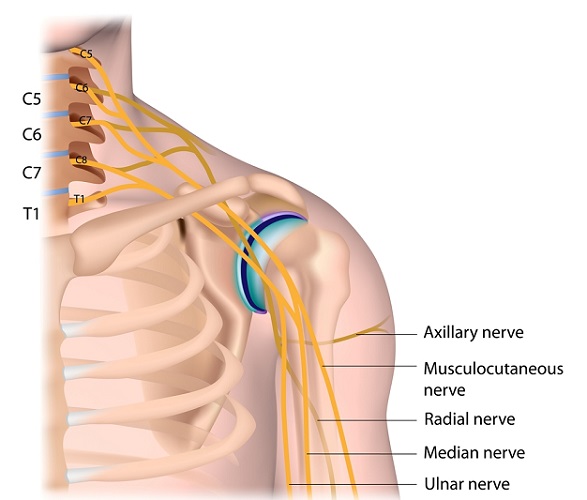
The brachial plexus has five roots in the spinal cord that run from the fifth cervical vertebra (C5) to the first thoracic vertebra (T1). Four of the five roots merge and one remains apart, producing three trunks. The trunks of the brachial plexus split to form various divisions. One of these divisions is the medial cord.
The medial cord branches off to form the medial pectoral nerve, two medial cutaneous nerves, the ulnar nerve, and part of the median nerve.
Another brachial plexus division important to median nerve anatomy is the lateral cord of the brachial plexus. The lateral cord that originates at a different brachial plexus trunk merges with the medial cord to form the median nerve.
The median nerve runs along the length of the arm, innervating the skin (sensory function) and muscles (motor function) of the hand. It branches off at the elbow to innervate the muscles of the forearm then continues to its main target – the hand.
The nerve branches off again at the base of the thumb (see below) to form the recurrent branch of the median nerve and various digital cutaneous branches. The recurrent branch innervates the thenar muscles at the base of the thumb; the digital cutaneous branches innervate the muscles of the index and middle fingers as well as half of the ring fingers.
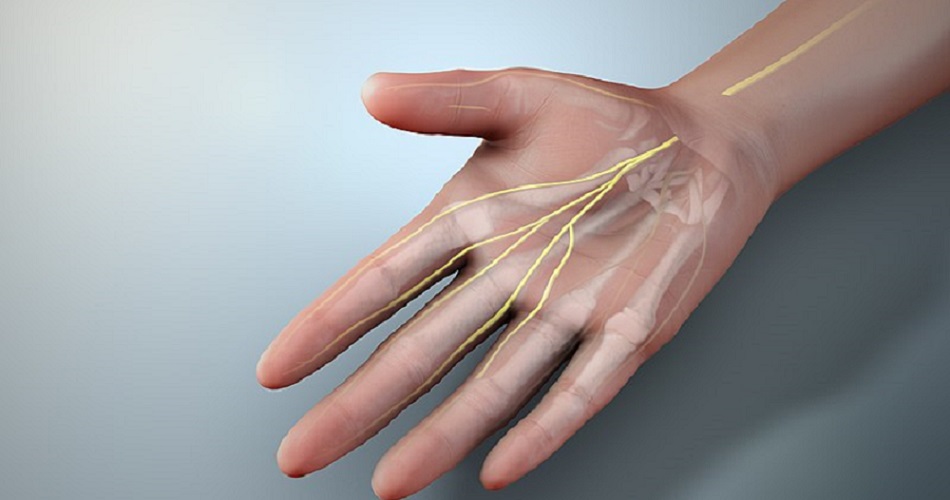
Median Nerve Distribution
Median nerve distribution is best visualized instead of described. In the image below, the pale purple shading shows how this nerve innervates the hands. Most median nerve distribution is palmar.

Sensory distribution innervates the skin of the thumb, the index and middle finger, and approximately half of the ring finger. Sensory function throughout the rest of the hand is catered for by the ulnar and radial nerves – also important branches of the brachial plexus.
Motor distribution covers both superficial and deep muscles of the forearm. These skeletal muscles are the:
- Pronator teres
- Flexor carpi radialis
- Flexor carpi sublimis
- Anterior interosseous
- Flexor pollicis longus
- Flexor digitorum profundus
- Pronator quadratus
- Thenar muscles
- Lumbrical muscles I and II
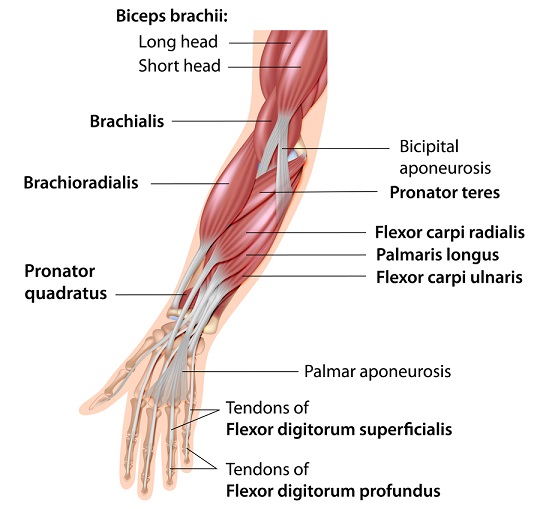
Median Nerve Injury
Probably the most common example of median nerve injury is carpal tunnel syndrome. Carpal tunnel syndrome is the result of median nerve compression where it passes through the wrist, between the transverse carpal ligament and the carpal bones. In cases of inflammation, tendonitis, or tenosynovitis, this nerve is compressed against the hard surface of the carpal bones, the ligament, and the surrounding tissues. Continuous pressure causes sensory disturbances (loss of sensation, pins, and needles, pain) in the palmar region and motor weakness in associated muscles.
Carpal tunnel syndrome is one of three disorders included in the median nerve entrapment group, where compression occurs either at the elbow, forearm, or wrist. Where compression occurs at the elbow, anterior interosseous syndrome (AINS) may be diagnosed. Sufferers usually find it hard to make the OK sign.

Median nerve entrapment at the forearm – pronator teres syndrome – is the result of compression by the pronator teres muscle of the forearm. Builders and factory workers who spend long periods hammering or making repetitive movements that require good input from forearms are particularly at risk. Unlike carpal tunnel syndrome, pain will also be present when the elbow is moved.
Median nerve pain and reduced range of motion are not always caused by compression. Fractures can damage or even sever a nerve causing pain and even paralysis. Self-injury and suicide attempts often involve cutting the wrists and lower arms – lacerations often heal but nerve damage may not.
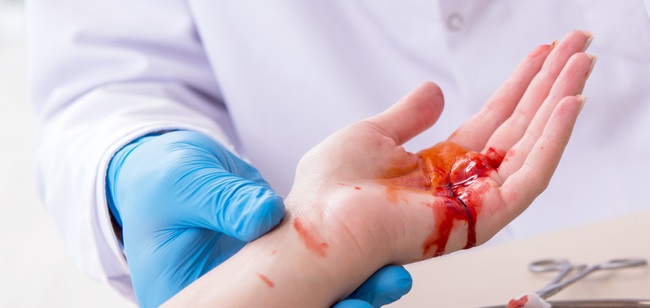
Cervical radiculopathy caused by a damaged vertebral disc or narrowing of the spinal cord can compress the upper spinal nerves that form the roots of the median nerve. However, multiple nerves will be affected as many nerve branches share a common root.
Carpal Tunnel Syndrome
Median nerve carpal tunnel syndrome (CTS) is incredibly common. Not every doctor agrees on the exact cause but certain risk factors are present. These are diabetes (increased inflammatory processes throughout the body), repetitive wrist movements, obesity, some autoimmune disorders, and pregnancy.
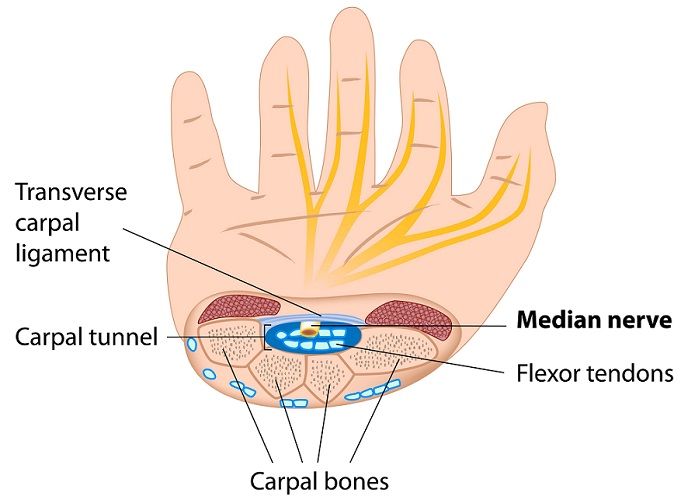
When a patient comes in complaining of median nerve pain that often keeps them awake at night or stops them using their hands, the correct diagnosis is required. Diagnosis involves a carpal compression test, where pressure is placed on the carpal tunnel region for a few seconds. If the patient feels pins and needles or pain, they are likely suffering from carpal tunnel syndrome. It is then important to see at what stage their disorder is.
Electromyography (EMG) for CTS looks at the electrical activity of skeletal muscle and can be a painful procedure when the affected nerve is damaged. A thin needle (electrode) is inserted into the muscle at the base of the thumb and electric impulses are passed through it. The physician can then see to what extent electrical activity is affected.
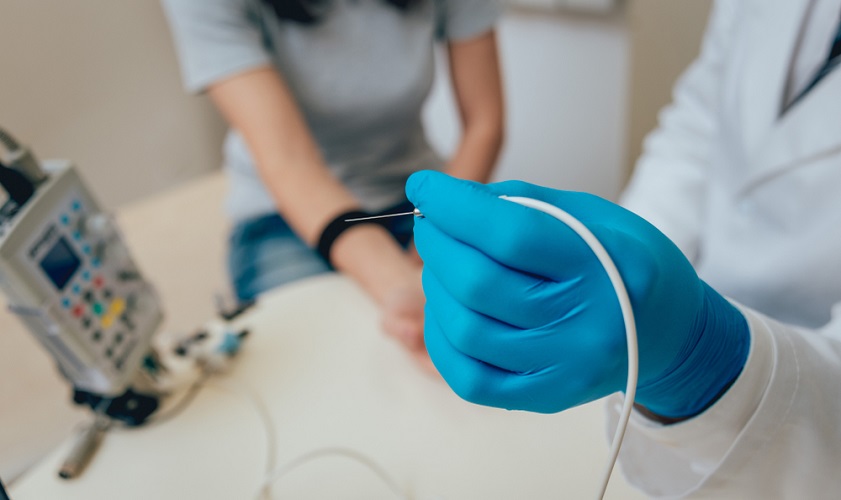
In early stages, median nerve carpal tunnel syndrome can be treated with wrist support and avoiding repetitive movements such as typing. If giving up a desk-job is not possible, changing the height or position of the keyboard and using ergonomic aids may relieve symptoms. Early-stage carpal tunnel syndrome is very rarely treated with surgery as compression often reoccurs over time; regular surgery around important nerves is never advised.
Carpal tunnel syndrome surgery can be done as an open (OCTR) or endoscopic (ECTR) procedure. An endoscopic carpal tunnel release is much preferred. A transverse ligament release is very short operation. By cutting through the taughtly stretched ligament, pressure on the median nerve is alleviated. Postoperative swelling might exacerbate CTS symptoms for a week or two, but success rates are high – especially in combination with good postoperative care and exercises.
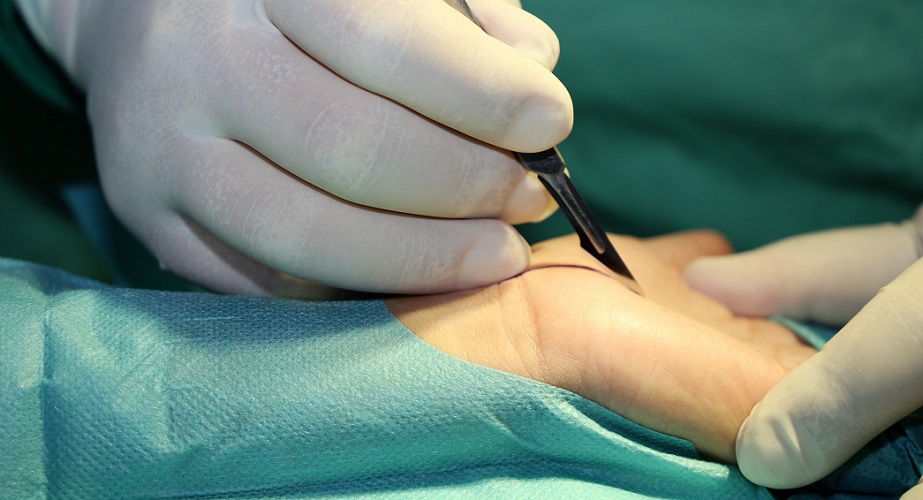
Most hospitals offer conservative or after-care instructions for median nerve impingement exercises. These specific movements are called median nerve glides and are designed to help stop the nerve from sticking to newly-forming scar tissue after carpal tunnel surgery or to stretch an irritated nerve that has not (yet) been operated on.
Nerve glides, sometimes called nerve flossing, is a gentle range of movements that stretch the nerve. In this way, the nerve will cover more of its target tissue. Such exercises may also reduce edema and blood flow to the affected region.
It is extremely important not to over-stretch during median nerve glide exercises as this will have an opposite effect, damaging the tissue and increasing edema. As a result, compression and the associated symptoms will get worse.
Median Nerve Block
A median nerve block is a procedure carried out by an anesthesiologist. A nerve block temporarily paralyzes the hand (motor block) and removes all sensation (sensory block). Extremely complex hand surgeries that previously required a full general anesthetic can now be carried out patients who are fully conscious or lightly sedated.
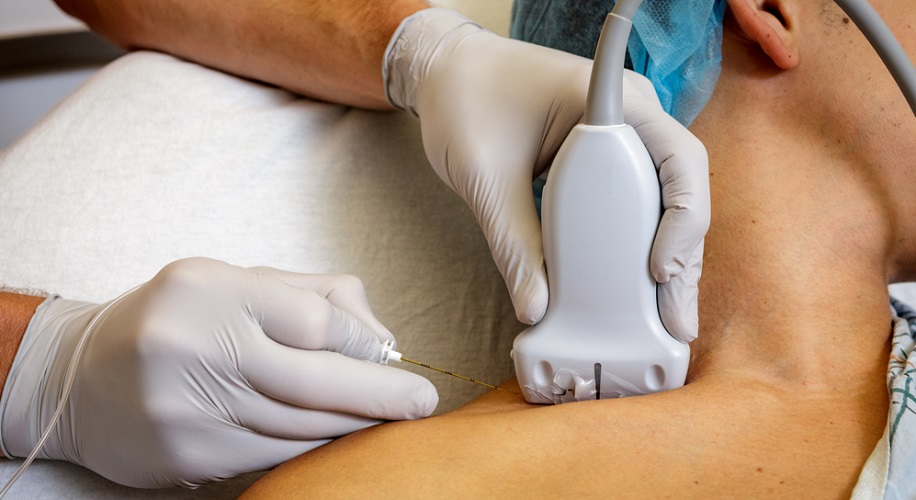
Median nerve blocks are sufficient for carpal tunnel surgery; however, for hand traumas where broader areas are affected a median nerve block can be combined with a radial nerve block and/or ulnar block. If all three need to be anesthetized, it is simpler to block the entire brachial plexus.
A wrist block is the most common type of nerve block used in carpal tunnel surgery. The procedure involves injecting quantities of a local anesthetic around the median nerve under ultrasound guidance. Modern methods use an electrical device (see below) that helps the anesthetist to inject the anesthetic as closely as possible to the nerve.
A hollow needle inserted into the area around the nerve emits electrical pulses. By looking at subsequent muscle movement in combination with an ultrasound image, the doctor avoids directly injecting into the nerve and causing long-term damage or piercing the many veins and arteries that supply it with oxygen and nutrients.
The experience is not pleasant but means no general anesthetic is required. Nerve blocks cannot be used when tissue is infected or very inflamed.
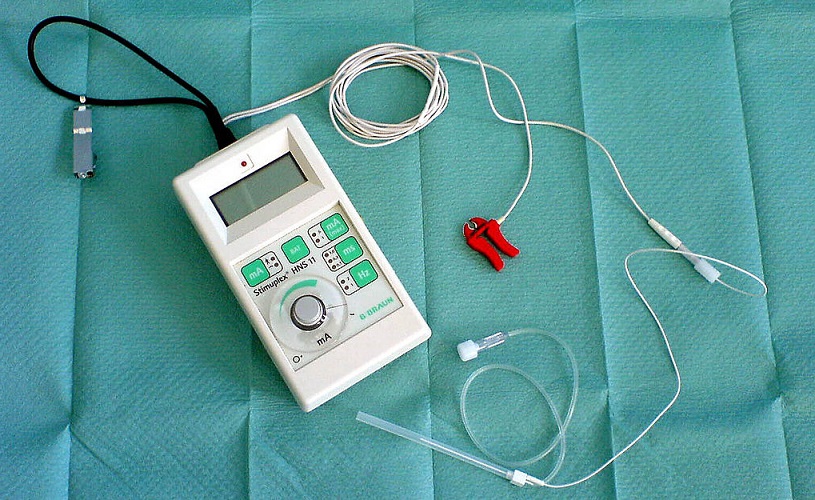
For complex surgery of the wrist, forearm, and perhaps the upper arm, a nerve block of the brachial plexus is advised. The entire arm and shoulder are made insensitive. In this case, all of the nerves of the arm are affected. As tourniquets are used during hand and arm surgery, a broader block will also ease any pain a tight tourniquet produces over time.
Quiz
